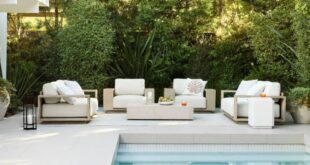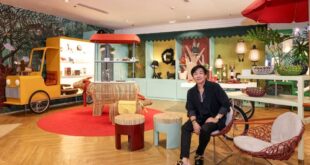
Much of modern architecture is, unfortunately, similar—streamlined. Western-influenced structures that are making city-scapes around the world look generic.
Not everyone thinks this is a good thing, one of them Davao-based Gloryrose Dy Metilla, principal architect of the culturally sensitive design firm Swito Designs Inc., who is known for incorporating Mindanaoan elements into the buildings she designs.
“The main philosophy of the firm was really to emphasize and celebrate… South East Asian architecture, and part of that is Mindanao architecture,” she said. “I was very passionate about… bringing out the cultural identity of places through buildings.”
Metilla explained that she was tired of hearing Filipinos brand their cities as “the next” foreign city” instead of using their own culture as a point of recognition. “I wanted to be the trailblazer to design spaces and places that would really show… the identity of a place.”
When the firm was set up in 2013, not a lot of people understood the importance of integrating the local culture into its buildings. “It wasn’t easy because clients want to have modern design. They haven’t had the heart for identity yet during that time.”
While she never lacked for clients, they tended to prefer Western designs. She realized that if she were to design the types of structures that she wanted, she would have to educate her potential clientele.

In 2015, she created the Balay Balay Architecture Puzzles, 3D puzzles of a Torogan (the traditional Maranaoan house for royalty) house as a way to market Mindanaoan designs through toys.
The toy included a comprehensive exhibit in 2016 backed by the National Commission for Culture and Arts (NCCA) that spanned different parts of the country. People started taking notice of Metilla and her architectural philosophy. In 2017, she finally began to work with clients who were interested in Mindanao architecture and design.
“It was not a walk in the park, but it was a worthwhile journey because I thought it was impossible,” she said. “It became possible through just some very innovative way of letting them understand that these kinds of designs are important and you have to have these spaces and places in the Philippines.”
She takes inspiration from traditional Mindanaoan buildings, adapting it to contemporary times. For example, the Nunguan barangay hall in the Pikit Cluster of the BARMM Special Geographic Area in Cotabato was “very inspired by the Torogon house which used to be also the house of the datu who is the leader of the community. We revived that as the design for the leader of the smallest local government unit in the Philippines, which is the barangay hall.”
Two significant buildings currently under construction are the capitol building of Maguindanao del Norte, which is inspired by the tubaw, or the headdress worn by the leader in Maguindanao and the Simunul Seaport in Tawi-Tawi, inspired by the laminusa mats the area is famous for.
She describes Mindanao design as rooted in tropical design: flexible, sustainable, rooted to genius loci or spirit of place, rooted to well-being, and is an architecture style that breathes.
“For example, all of the houses [and offices] in Mindanao [should face] the sunrise,” she explained. “So when we design offices, [we make sure that the office of the] leader catches the first sunrise.”
Traditional features that are current marks of sustainability include the use of latticework to encourage ventilation, the use of artisan craftsmanship, leading to the revival of certain cultural arts such as traditional beam making that incorporates the panolong (ship prow) design unique to the Maranao people. “[That] age-old tradition is being preserved. It’s amazing,” Metilla said in Taglish. “An architect can be a force for that kind of phenomenon to happen, And it happened in the Bangsamoro region.”
These are mixed with modern sustainability principles such as rainwater catchment and solar panels.
Metilla is also involved in other cultural ventures. Aside from being the editor-in-chief of digital publication Filipina Architecture Resource Magazine that features local architects and designers, she’s also launching a coloring book on Mindanao indigenous architecture and is helping organize the first Philippine Architecture and Allied Arts Festival in cooperation with the NCCA.
For this architect, homes and buildings aren’t just places to love and work in but a reflection of the local culture.
“It’s not just architecture. It’s also a movement.” — Yvette Tan
*****
Credit belongs to: www.mb.com.ph
 Atin Ito First Filipino Community Newspaper in Ontario
Atin Ito First Filipino Community Newspaper in Ontario





